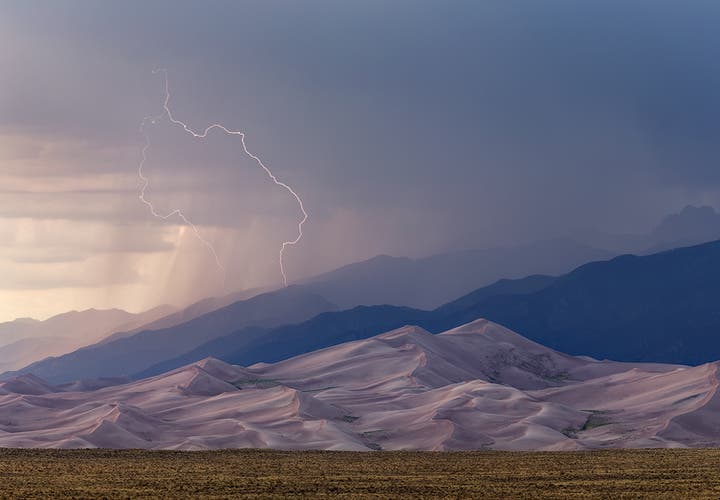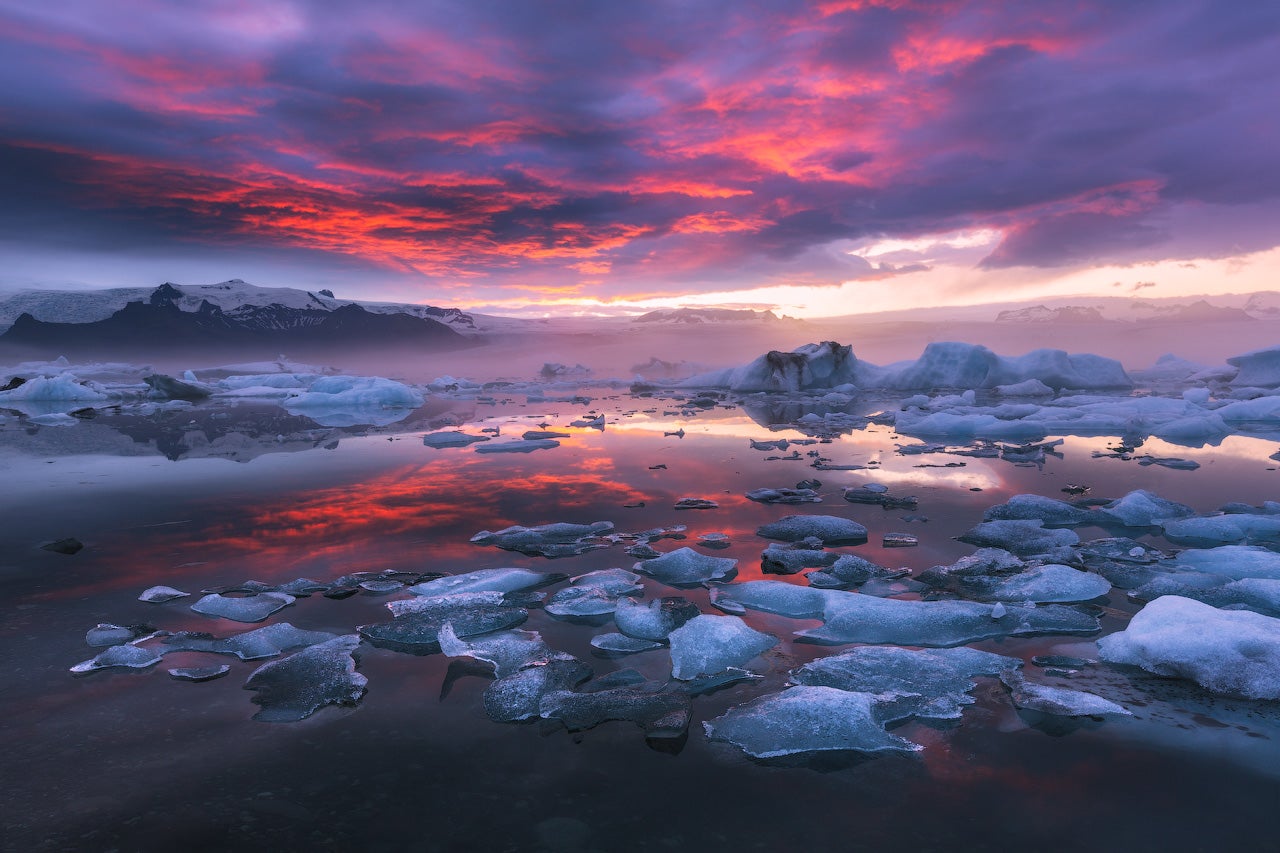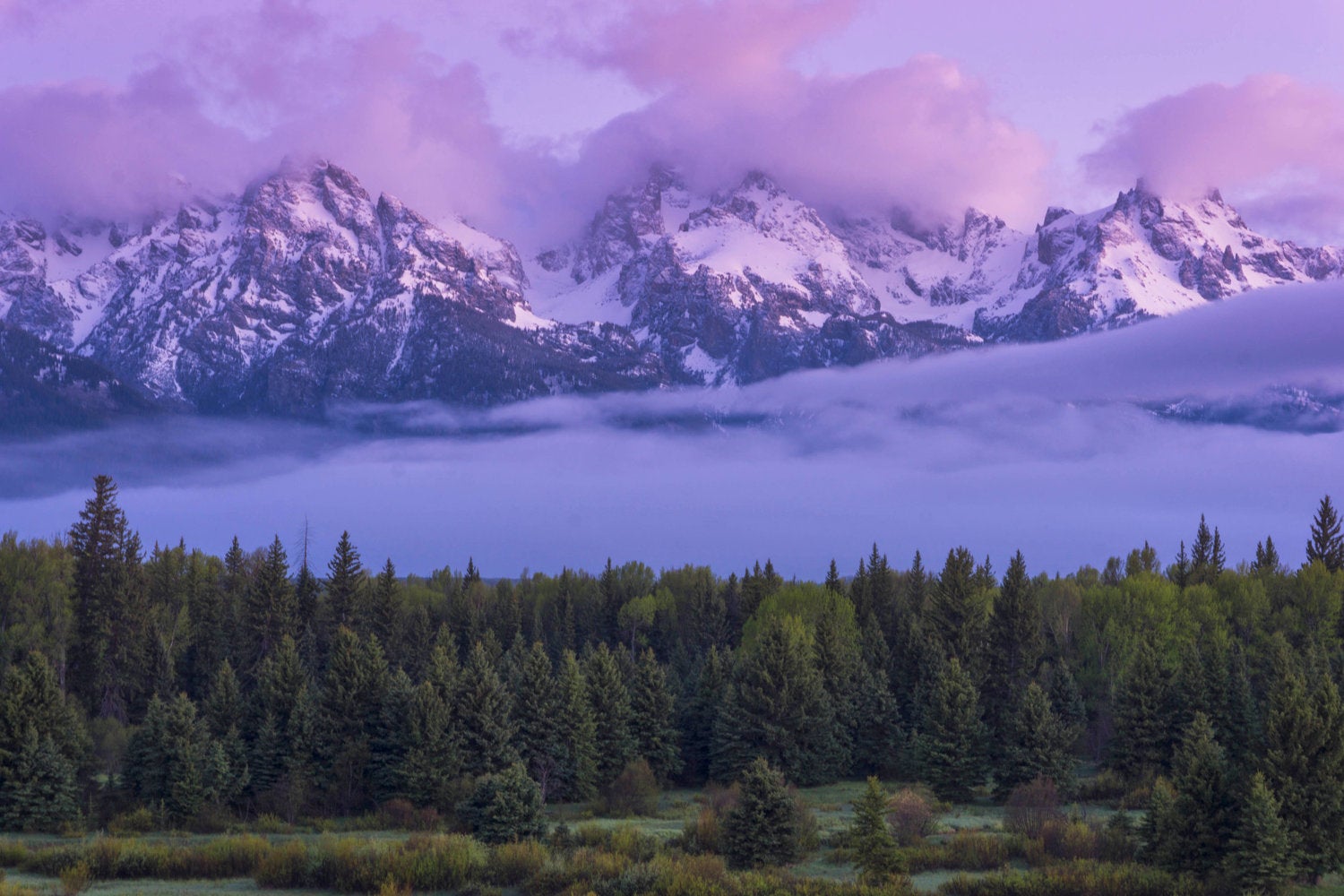
When I first took up landscape photography, I often wondered why my photos did not look like those I admired in photography books. I was visiting the same places as I saw in the books but my results looked nothing like the dynamic, compelling, and inspirational photos taken by other photographers.
- Check out these articles on Photography Techniques
- See this Complete Guide to Photography at Reynisfjara Black Sand Beach
- Discover 15 Places in the World That Every Landscape Photographer Has to Visit
Looking back on my early photos, they were all missing some key ingredients, like stronger compositions, better lighting, and more interesting conditions. Based on the lessons I have learned in honing my own technical skills and creativity, I share eight tips to help you improve your landscape photography below.
Tip #1. Explore Beyond the Obvious Spot
A photo-sharing service I use occasionally publishes a mosaic of photos taken at some popular spots. Nearly all of them are taken from one or two common points of view, and aside from weather and light, all look mostly the same.
While the obvious view is often a good one, it is important to move beyond the point where everyone else stops to look for a view that is more unique to you.
When I visit iconic locations, I almost always snap a photo of the common view and then spend the rest of my time looking for other perspectives. Exploring beyond the obvious spot will help you and your view of the world come through your photos, often making them more compelling, interesting, and personal.
Tip #2. Learn How Lighting Affects Your Scene
Next time you are out in nature, spend some time observing how light can dramatically change a scene.
Take a sunrise for example. When night starts to fade, your camera will pick up the blue tones of twilight and the light will fall evenly across a scene.
After twilight on a clear day, pink and blue bands of colour will fill the sky in the opposite direction of the rising sun.
As the sun gets closer to the horizon, red light will start appearing on the tallest features of a landscape, like mountains. This red glow, called alpenglow, usually only lasts for a moment, fading to golden light and then harsher direct light as the sun gets higher in the sky.
With the sun higher in the sky, shadows and highlights become more pronounced and the contrast in a scene becomes more intense.
When photographing a landscape through these phases, the resulting photographs will be quite different because the quality of the light is so different, even if the other elements of your photograph, like your composition and framing, stay exactly the same. As you learn more about how light affects a landscape, you can apply your knowledge to decide under what conditions a landscape might looks its best given your aesthetic preferences.
 Look for smaller scenes and interesting details when out photographing, like these corn lilies in Colorado. Photo by: 'Sarah Marino'.
Look for smaller scenes and interesting details when out photographing, like these corn lilies in Colorado. Photo by: 'Sarah Marino'.
The photo above demonstrates the concept of seeing abstractly. Repeating triangles in the corn lilies are a key compositional element here. The more that you practice to see abstract compositions within nature, the easier it will become.
Tip #3. Go Beyond the Grand Landscape
While grand scenes, including both the landscape and the sky, are excellent subjects for landscape photography, smaller vignettes isolating nature’s details also offer interesting subjects. Next time you are out photographing, take out your telephoto lens and spend some time zooming in on smaller scenes.
Look for abstract patterns or interesting arrangements of natural subjects and work to isolate them from the larger scene. Doing so will help add depth and variety to your portfolio of work and can help strengthen your observational skills.
 These ribs of hardened sand provide strong leading lines in this photograph of White Sands National Monument in New Mexico. Photo by: 'Sarah Marino'.
These ribs of hardened sand provide strong leading lines in this photograph of White Sands National Monument in New Mexico. Photo by: 'Sarah Marino'.
In the image above, the lines in the sand help to lead the viewer’s eye back to the sunstar and stormy clouds. This creates a sense of depth which would not otherwise have been achieved in the flat landscape.
Tip #4. Build Your Compositional Skills
Compared to many other types of photography, landscape photographers have little control over the subjects we photograph. We, however, can use compositional skills and techniques to arrange natural elements in our photographs for greater impact. Thus, composition, or how a photographer chooses to arrange elements within the frame, is an essential skill to develop.
While entire books have been written on composition, some simple practices can help elevate your photographic compositions.
For example, start thinking deliberately about how elements within your frame interact with one another. For wide angle landscapes, think about what you are including as foreground, mid-ground, and background elements and how those elements can interact together in interesting, pleasing, or compelling ways.
Start identifying elements of your composition as abstract features and then use those features to strengthen a photograph. For example, does your scene have lines that lead a viewer’s eyes from the foreground to background or does your scene have pleasing layers that unify the scene? Thinking through and applying these concepts can help elevate your compositions and improve the resulting photographs.
 A small playa among the dunes at Death Valley National Park. Photo by: 'Sarah Marino'.
A small playa among the dunes at Death Valley National Park. Photo by: 'Sarah Marino'.
In the image above, getting down low while using a wide angle lens helped to emphasise and exaggerate the patterns of a small playa that I found amongst the sand dunes of Death Valley National Park.
Tip #5. Change Your Perspective
While working on your compositional skills, one important practice is learning how a small change in your position can have a dramatic effect on how elements within your frame interact with one another. Getting down low can exaggerate foreground elements when using a wide angle lens. Moving from side to side, forward, backward, higher, and lower can all change the resulting photograph, sometimes quite dramatically.
Take the photo of the playa (dried and cracked mud) above. Getting down low strongly emphasises and exaggerates the tiles in the foreground but eliminates some of the details in the mid-ground. Raising the height of my tripod would have made the foreground cracks less prominent, giving more equal weight to the cracks in the mid-ground. Moving to the left or right would have changed the arrangement of cracks in the foreground, possibly making their arrangement more or less pleasing. Next time you are out photographing, spend some time thinking through and experimenting with how the physical position of your camera will affect your resulting photograph.
 Selecting a slower shutter speed (longer than one-fourth of a second) adds silkiness to water, an effect that can help improve the visual aesthetics in a scene and imply motion when photographing water. Photo by: 'Sarah Marino'.
Selecting a slower shutter speed (longer than one-fourth of a second) adds silkiness to water, an effect that can help improve the visual aesthetics in a scene and imply motion when photographing water. Photo by: 'Sarah Marino'.
This photo of a stream in Oregon’s Columbia River Gorge helps to demonstrate how silky water can show motion when photographed using a slower shutter speed for a longer exposure.
Tip #6. Use Technical Settings for Creative Effects
Technical settings, like aperture and shutter speed, can be used for creative effect in landscape and nature photography. For example, varying your shutter speed can have a big impact on the resulting photograph when photographing a scene with moving elements.
With water, a longer shutter speed will result in a silky, flowing effect while a faster shutter speed will capture more detail and texture. The same scene with flowing water photographed at different shutter speeds will look very different, offering a photographer creative choices.
When you are out in the field, experiment with different shutter speeds to determine what you like best.
Tip #7. Seek Out Dynamic Weather
“Good” weather for landscape photography is often different than “good” weather for everyone else. While a crisp, blue-sky autumn day can be fantastic for hiking, a stormy day with interesting clouds can offer more opportunities for dynamic photography conditions.
I often like to photograph at the edges of a storm, either when it is starting or clearing, because of the dynamic conditions that often exist. Clouds, atmospheric conditions like mist and fog, and dramatic lighting often accompany dynamic weather so getting out during these times can help create more interesting photographs.
Clouds can also serve as important compositional elements, creating opportunities that might not exist on clear days.
 Lightning storm at the Great Sand Dunes in Colorado. Photo by: 'Sarah Marino'.
Lightning storm at the Great Sand Dunes in Colorado. Photo by: 'Sarah Marino'.
Photographing in dynamic weather can help to add interesting elements to a photograph, like the lightning and stormy light here. Just be sure to put your personal safety first when photographing in stormy weather.
- See also: How to Take Great Photos in Bad Weather
Tip #8. Spend Time Practicing and Experimenting
Getting out with your camera on a regular basis to put these tips into practice is the most important tip of all. You do not need to be able to travel to exotic locations to build your landscape photography skills. Instead, try to visit your local nature reserve, open space, or public garden on a regular basis so you can practice and take time to experiment.
Being comfortable with your camera equipment and using it regularly will allow technical decisions to become more automatic, giving you the ability to focus on the more creative and enjoyable aspects of landscape photography when you are out traveling. Experimentation is also essential in learning what works and what doesn’t, with those lessons helping strengthen your photography skills along the way.
About the Author: Sarah Marino is a landscape photographer based in the USA. You can find more of her work on her website, or by following her on Instagram.
Are you ready to get out into nature to practice your landscape photography skills? Check out our range of photography workshops and tours in Iceland!












